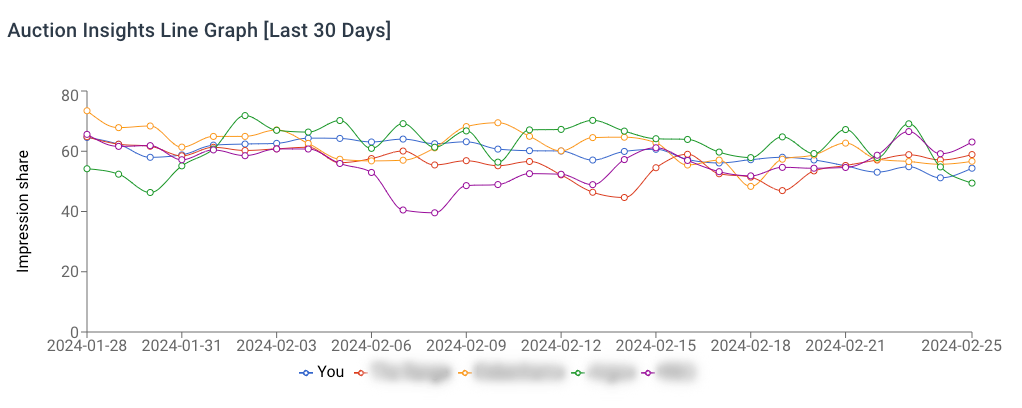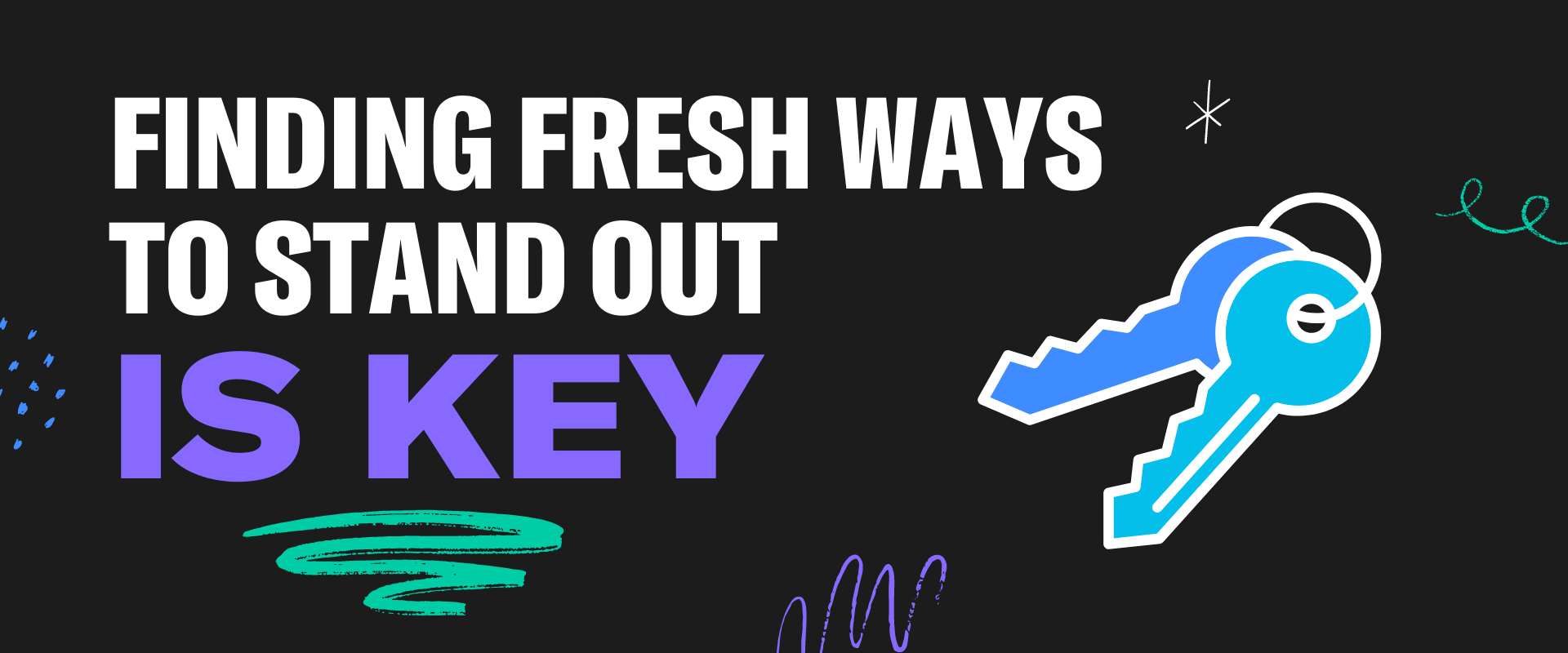In today's fiercely competitive online market, understanding your competition isn't just an advantage; it's a necessity.
In a world where consumer preferences shift at breakneck speed and digital marketplaces are crowded with offerings, staying ahead means not just knowing your audience, but also having a deep understanding of how your competitors are catering to similar needs. It’s not just about keeping an eye on the other guys; it’s about finding out what they’re doing right (or wrong) and using that knowledge to make your business even better.
In this article, we’re going to show you how to conduct competitor research to help improve everything from your marketing messages to the discounts you offer, and the user experience you give your customers. By learning from your competition, you can find new ways to make your business the one customers think of first.
Leverage Auction Data for Killer Competitor Analysis
If you run paid search or shopping campaigns, you’re constantly bidding against competitor brands. Tapping into these advertising insights delivers a wealth of intel to guide your strategy and budgets.
Google and Microsoft provide reports showing which brands you’re competing with in keyword and product listing ad auctions. This allows you to:
- Identify your top competitors
- Spot rising competitor threats
- Pinpoint areas of overlap and opportunities to differentiate
Auction insights include key metrics that quantify how your and competitors’ ads are performing head-to-head:
Impression Share - This shows what percentage of auctions your ads showed up for. It's your actual impressions divided by the impressions you were eligible to receive.
Overlap Rate - The percentage of times a competitor's ad appeared in the same auctions as your ad. Useful for gauging direct competition.
Position Above Rate - How often a competitor's ad showed higher than your ad when you both appeared in the same auctions.
Top of Page Rate - How frequently an ad appears anywhere in the top section of the search results.
Absolute Top of Page Rate - Specifically how often an ad grabbed the prized #1 position.
Outranking Share - The percentage of times your ad outranked a competitor's, either by showing higher or when their ad didn't show at all.
Review these to evaluate your visibility strength next to other brands and set realistic impression share targets.


Understanding these auction insight metrics is essential for navigating the competitive landscape of B2C advertising. Each metric gives you a clear picture of how your ads compare to those of your competitors. They show you not just how you're performing, but also where you can improve. The real value comes from using this information to make informed decisions.
With these insights, you can see exactly where your ads need adjustments. Maybe you need to bid differently to appear at the top of the page more often, or perhaps your ads could be more engaging to increase your share of impressions. These metrics give you the feedback you need to refine your approach and boost your visibility.
Analysing Your Competitors’ Promotions Can Give You The Edge
For B2C companies relying heavily on online revenue, competitor offers intelligence can make or break your customer acquisition and retention efforts.
Understanding the promotions, discounts, and special offers your competitors are putting out there can seriously shape your strategies for attracting and keeping customers. Here's how you benefit from diving into what others in your market are doing:
Stay on Top of Pricing Trends
It's important to know when your competitors adjust their prices or launch big sales. This information helps you keep your prices competitive and decide when it might be time to offer more enticing deals. Watching how others price their products and the kinds of discounts they provide can guide you to make smart pricing decisions that attract more customers.
Spark Ideas for Your Own Promotions
Take a close look at the successful promotions your competitors are running. What messages are they using? What kind of deals are they offering? Use this as inspiration to come up with creative promotional campaigns for your audience. Pay attention to their design, messaging, and overall user experience. This can help you brainstorm new ideas that could appeal to your customers.
Encourage Customer Retention
If a customer is weighing your offer against a competitor's, you want to make sure yours stands out. By knowing what others are offering, you can adjust your promotions to ensure they're as good as, if not better than, what's out there. This is key to encouraging customers to stick with you instead of switching to a rival.

Consistently monitoring what your competitors are up to requires effort, but it's worth it. It leads to smarter pricing, more creative promotions, and stronger customer loyalty. In the competitive online shopping world, staying informed about your rivals' moves is an insight you simply can’t ignore.
Sharpen Your Brand To Stand Out
What sets your brand apart is everything. Brands live and die by their value proposition and unique selling proposition (USP). That's why it's so important to take a close look at how your competitors present themselves and how it compares to your message.
Spot What Makes You Unique
Start by examining your competitors' value propositions—the promises they make to attract customers. What features or benefits do they highlight? Compare these directly with your own to identify what truly sets your brand apart. This comparison not only clarifies your unique strengths but also helps you see where you overlap with others.
Find Opportunities You Might Be Missing
By keeping an eye on how competitors' value propositions change over time, you can spot shifts in the market or new customer needs that you need to address. If you notice competitors are focusing on something new that you've overlooked, it's a sign that a gap is forming and you might need to update your approach.
Strengthen Your Unique Selling Point
Reviewing how your competitors position themselves gives you the chance to reassess your own unique selling proposition (USP). If you find that others claim similar unique benefits, it's time to think creatively about how to reassert your brand's uniqueness. Whether it's through your products, services, or the customer experience you offer, finding fresh ways to stand out is key.

Regularly comparing your brand to your competitors isn't just about keeping up, it's about staying ahead. It forces you to continuously refine what makes you different and valuable to your customers. In today's market, that's what leads to a stronger brand preference with the modern-day consumer.
Boost Your Website's User Experience
Customer journeys overwhelmingly happen online. Taking a close look at how your competitors handle their online presence can give you valuable clues on how to improve your own site's user experience. Here's why it's worth studying your rivals:
Compare Visual Designs and Layouts
Look at how your competitors' websites look and work, both on desktop and mobile. Compare their designs, layouts, and how they organise information with what you're doing. See something you like? Consider how you might incorporate similar design elements, navigation methods, or new features that catch your eye.
Learn from Their Calls-to-Action
Notice where and how competitors use calls-to-action (CTAs) on their sites. Do they have lots of prompts to "Add to Cart" on product pages, or do they highlight email sign-ups in certain spots? Analysing their approach can inspire how you use CTAs to boost your own site's conversions.
Dissect Their Best-Performing Pages
Dig into which pages on your competitors' sites get the most traffic and engagement. Look at the content, layout, images, and special offers they use. What makes these pages work? Use these insights to enhance your key pages, making them more engaging and effective at converting visitors.
Identify and Fix Common Pain Points
Act like a user on your competitors' sites and look for anything that could be annoying or confusing. Then, make sure your site addresses these issues before they become a problem for your own customers. Fixing these issues can make your site more user-friendly and trustworthy.
Keeping up with the competition means constantly updating and refining your digital presence. By borrowing the best ideas and avoiding the pitfalls you see on other sites, you can create a smoother, more enjoyable experience for your customers.
To wrap it all up
Gosh, that was a long one, wasn’t it? We’re at the end now we promise.
Wrapping up, diving into what your competition is doing can really pay off for your business. It’s all about being smart with the information you gather. You don’t have to copy exactly what they’re doing, but it’s good to see what’s working for them and think about how you can do something similar (or even better) for your customers. So use what you learn to make your place the one where everyone wants to shop.

February 28, 2024




